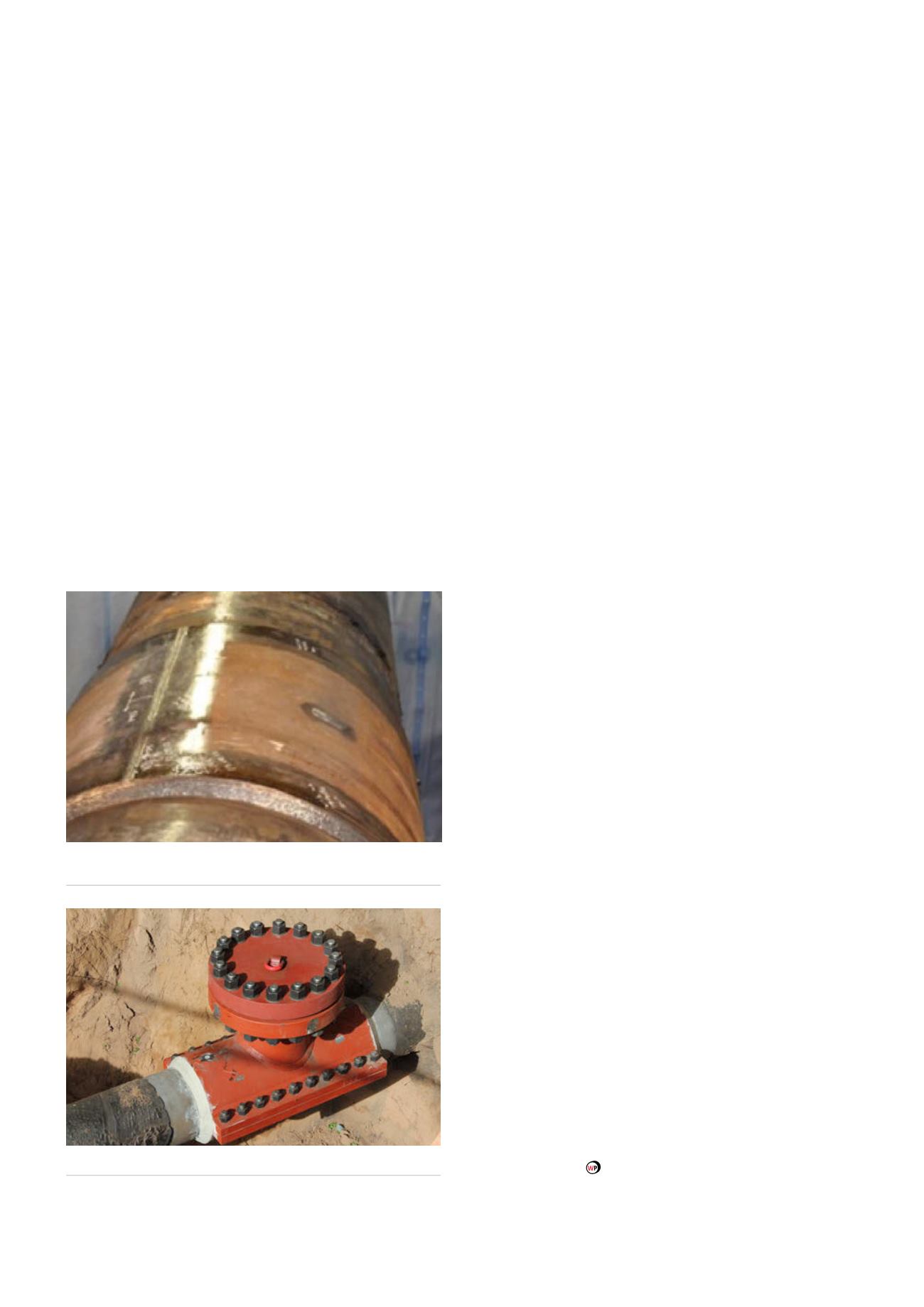
converting temporary repairs by leak clamps to permanent
repairs that can provide structural strengthening and can
accommodate high stresses in the axial direction. An example of
a welded tight fitting split sleeve that was used for live repair of
a 48 in. OD gas pipeline with a deep girth weld flaw (Figure 4).
Epoxy repair sleeves
During the early 1980s, British Gas developed the epoxy sleeve
repair, which is suitable for most pipeline defects. The physical
properties of the epoxy proved to be exceptional and the
original technology has been further developed over the years to
create branch connections, sleeved pipeline end seals and leak
repair solutions. The responsible development group including
all recourses and knowledge related to epoxy technology was
later sold out of British Gas, and is now part of DNV GL including
personnel, technology and several patents. The epoxy sleeve
is used on pipeline defects, such as corrosion, dents, gouges,
cracking, weld defects and minor leaks. It remains one of the only
pipeline repair methods suitable for girth weld defects.
Grouted Tee fitting
The Grouted Tee fitting is a further development based on the
epoxy repair sleeve technology and has been expanded for
application on thin walled, cast iron and subsea pipelines (up to
200 m water depths). This technology can be utilised to repair
illegal hot tap connections, as it can be implemented to support
a cut out and replacement operation or used as a single hot
tap repair. With a minimum design life of 40 years, the Grouted
Tee is an attractive method for the installation of a branched
connection onto a live pipeline without adjustments to the
pipeline’s operating conditions (Figure 5).
The stand-off sleeve and gas barrier concept
Repairs to encapsulate leak clamps have involved using stand-
off sleeves. These can be used to repair the pipe bends but
also pipelines that have sustained various types of mechanical
damage, i.e. buckles, dents, kinks and wrinkles. DNV GL has
developed a concept that has been used for permanent onshore
and subsea repairs of pipelines designed and constructed to
DNV-OS-F101. This is a concept involving the use of a stand-off
sleeve welded onto the damaged pipe using an internal gas
containment barrier.
During welding the gas containment barrier is purged with
nitrogen or inert gas to ensure the safety of the repair crew. The
repair method has been applied for subsea pipeline repairs in
cofferdam and even in a hyperbaric welding habitat.
Cost-effective and efficient operations
Pipeline live repair is highly OPEX-efficient. These live repair
strategies are developed based on both proven and new
technologies, and are associated with dedicated repair
procedures and instructions to site personnel. The few
techniques and challenges related to pipeline live repair
discussed suggests that the success of these live repair strategies
depends on:
)
)
Preparedness to carry out such operations by the operator,
including availability of equipment, operator’s internal
procedures, established links with third parties for possible
involvement and intervention.
)
)
Assessment of the damage, confirmation of the need for
repair and determination of safe operating conditions
temporarily before and during the live repair operation.
)
)
Expertise and experience of all parties involved. Pipeline
integrity expertise is important for expected live repairs
to assess the criticality and stability of the damage and
proposed repair techniques.
)
)
Using well established international guidelines that are
accepted by major operators and other stakeholders.
The new edition of the DNV GL Recommended Practice
on pipeline subsea repair, DNV-RP-F113, will be harmonised with
the latest revision of DNV-OS-F101 and will extend coverage to
repair of clad and lined pipe, surface pipeline recovery, damage
assessment (including root cause assessments, inspection
methods, criticality assessment, selection of mitigations and repair
methods for given damage), and lifecycle management of pipeline
repair operations.
Figure 4.
Live repair example using a tight fitting full
encirclement split sleeve.
Figure 5.
Example of an installed Grouted Tee.
40
World Pipelines
/
MARCH 2016


